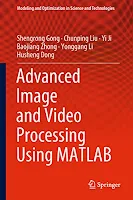Learn Neural Networks using Matlab Course [Size: 187 MB] ... MATLAB (matrix laboratory) is a multi-paradigm numerical computing environment and fourth-generation programming language developed by MathWorks. Although MATLAB is intended primarily for numerical computing, but by optional toolboxes, using the MuPAD symbolic engine, has access to symbolic computing capabilities too. One of these toolboxes is Neural Network toolbox. This toolbox is free, open source software for simulating models of brain and central nervous system, based on MATLAB computational platform. In these courses you will learn the general principles of Neural Network Toolbox designed in Matlab and you will be able to use this Toolbox efficiently as well.
The list of contents is: - Introduction: in this chapter the Neural Network Toolbox is Defined and introduced. An overview of neural network application is provided and the neural network training process for pattern recognition, function fitting and clustering data in demonstrated.
- Neuron models: A description of the neuron model is provided, including simple neurons, transfer functions, and vector inputs and single and multiple layers neurons are explained. The format of input data structures is very effective in the simulation results of both static and dynamic networks. So this effect is discussed in this chapter too. And finally the incremental and batch training rule is explained.
- Perceptron networks: In this chapter the perceptron architecture is shown and it is explained how to create a perceptron in Neural network toolbox. The perceptron learning rule and its training algorithm is discussed and finally the network/Data manager GUI is explained.
- Linear filters: in this chapter linear networks and linear system design function is discussed. The tapped delay lines and linear filters are discussed and at the end of the chapter LMS algorithm and linear classification algorithm used for linear filters are explained.
- Backpropagation networks: The architecture, simulation, and several high-performance backpropagation training algorithms of backpropagation networks are discussed in this chapter.
- Conclusion: in this chapter the memory and speed of different backpropagation training algorithms are illustrated. And at the end of the chapter all these algorithms are compared to help you select the best training algorithm for your problem in hand.
- Matlab Software Installation: You are required to install the Matlab Software on your machine, so you can start executing the codes, and examples we work during the course.



















